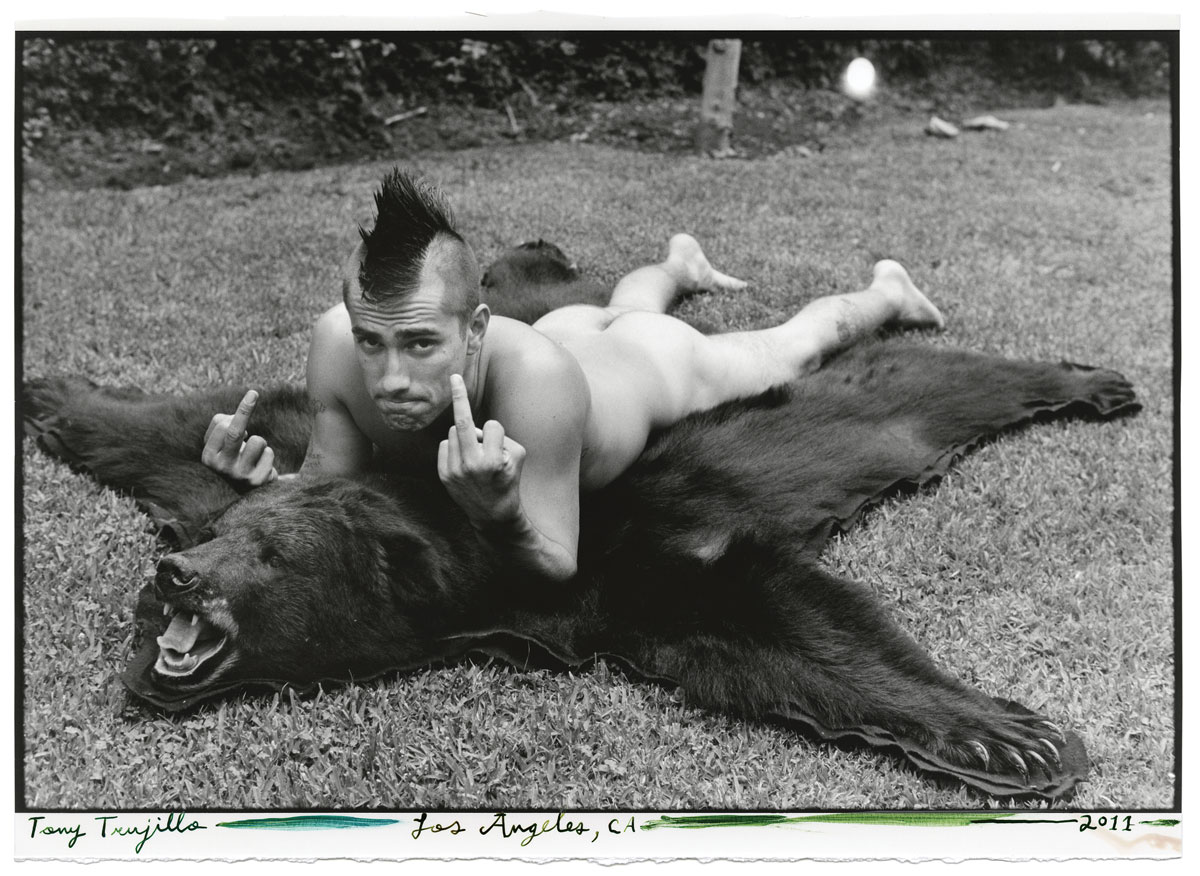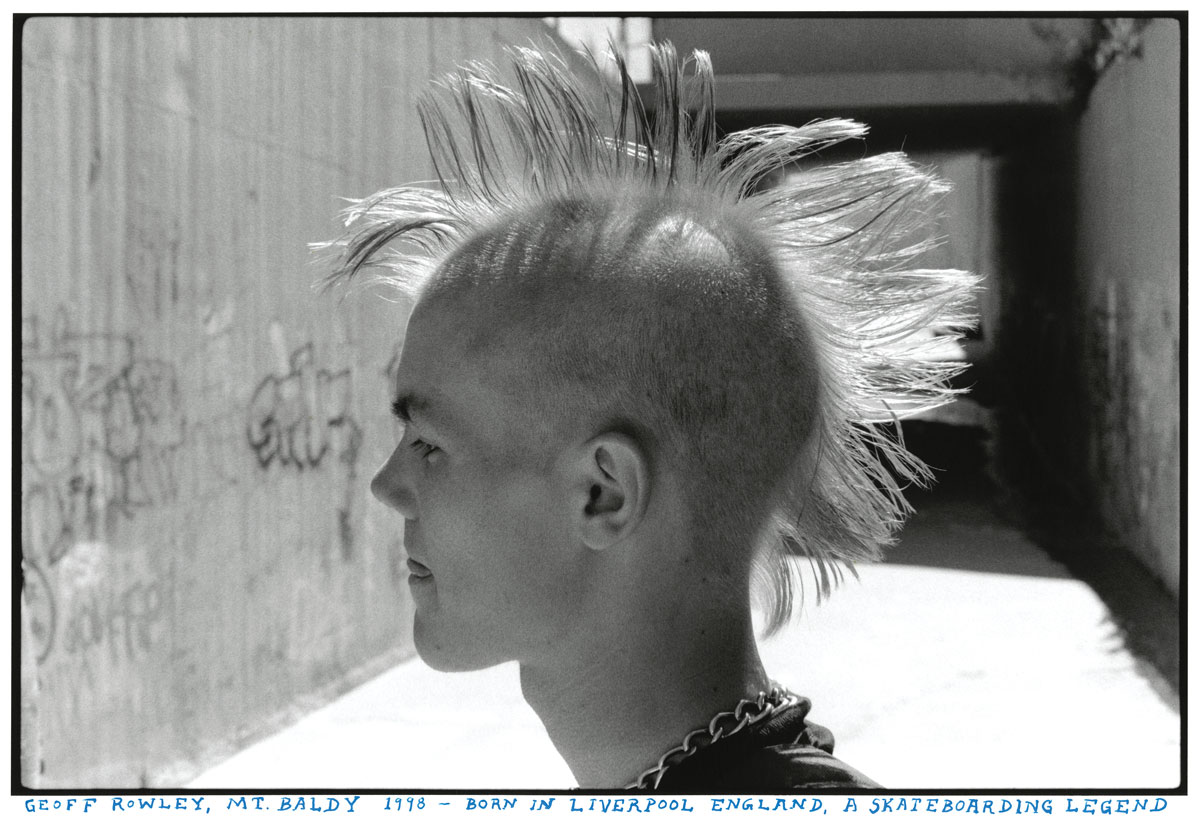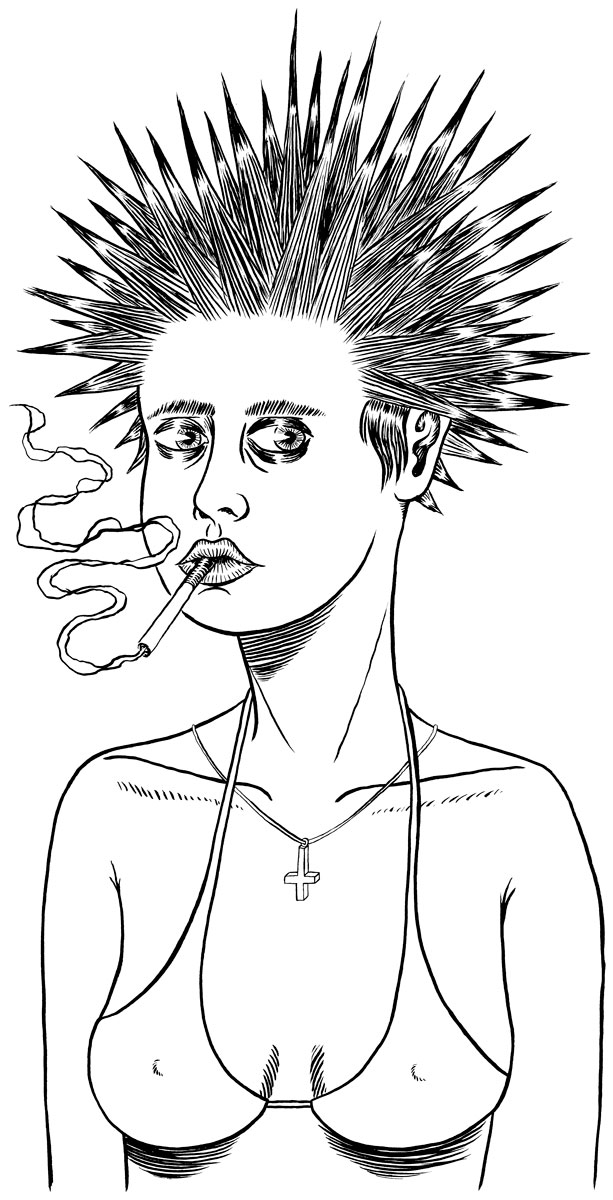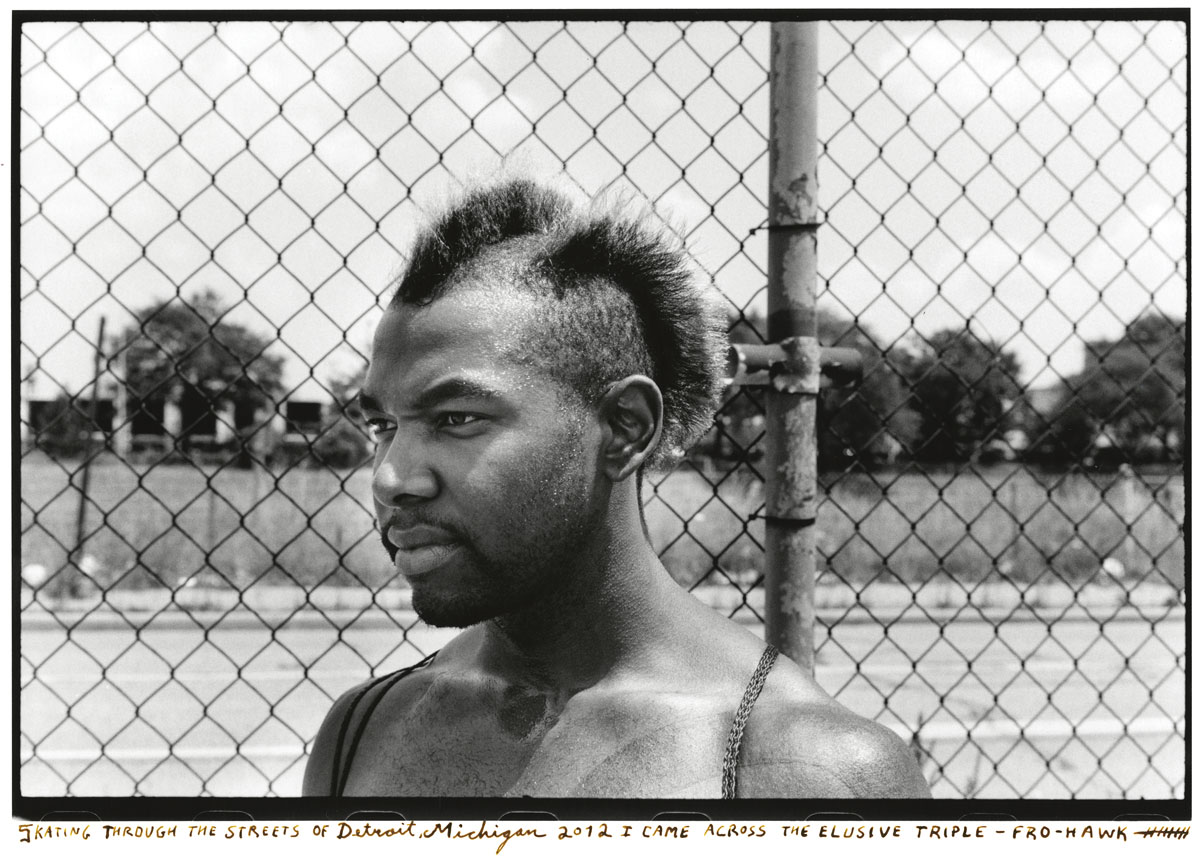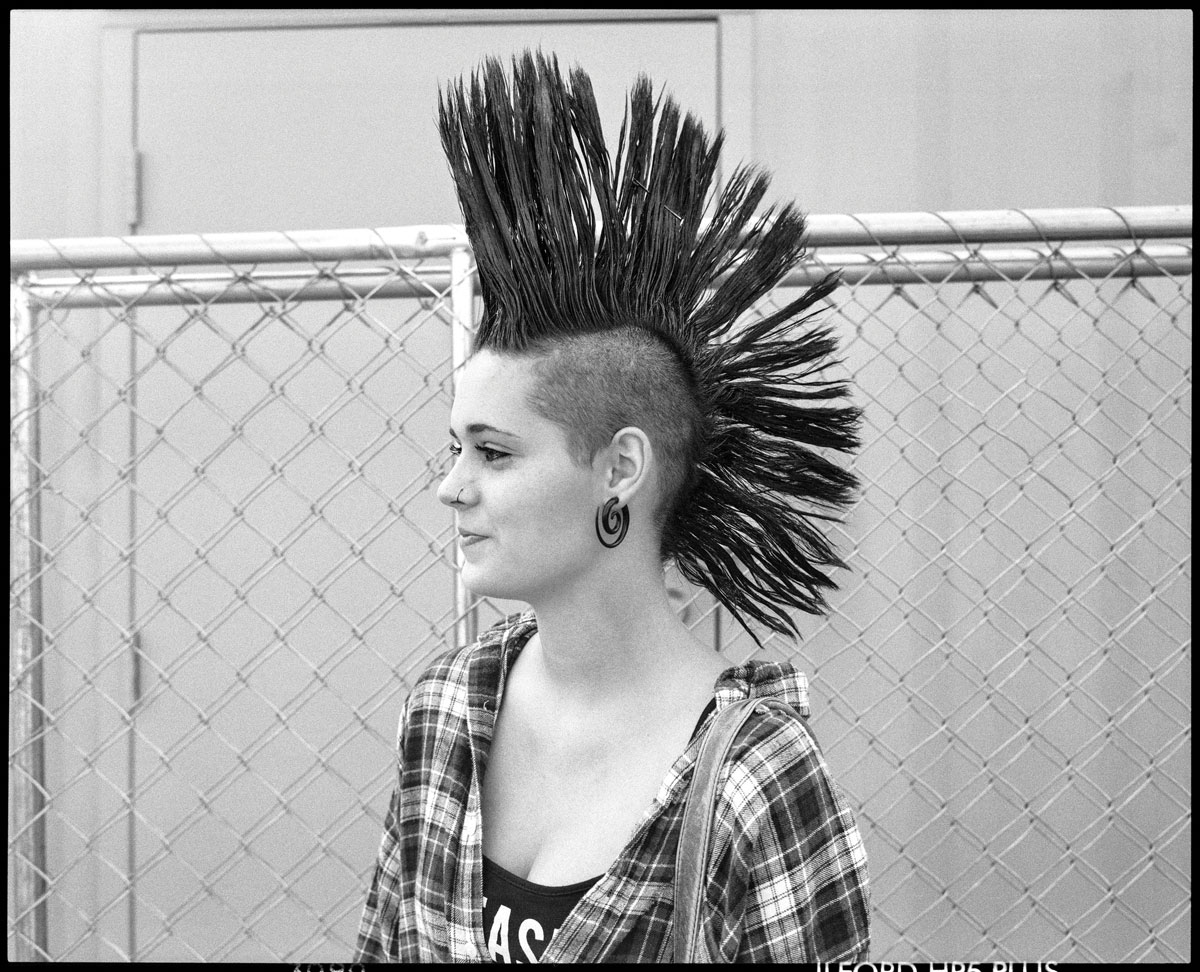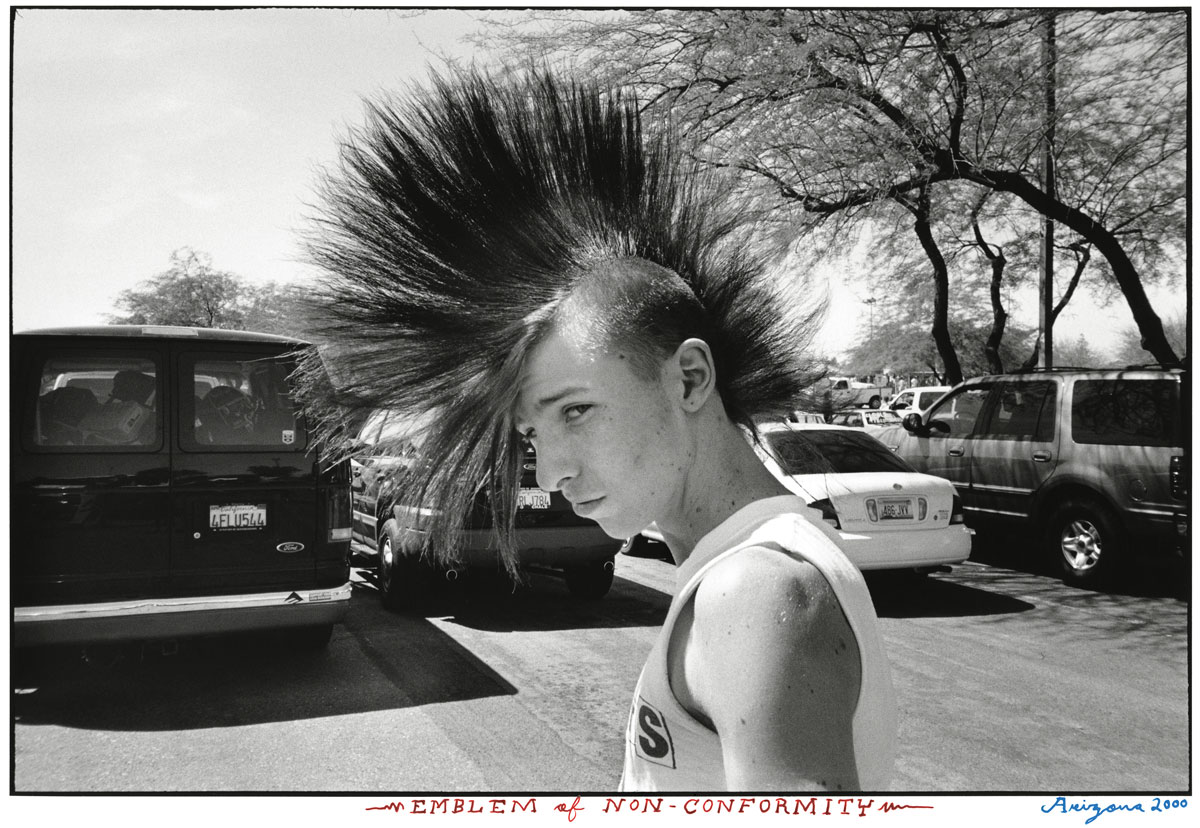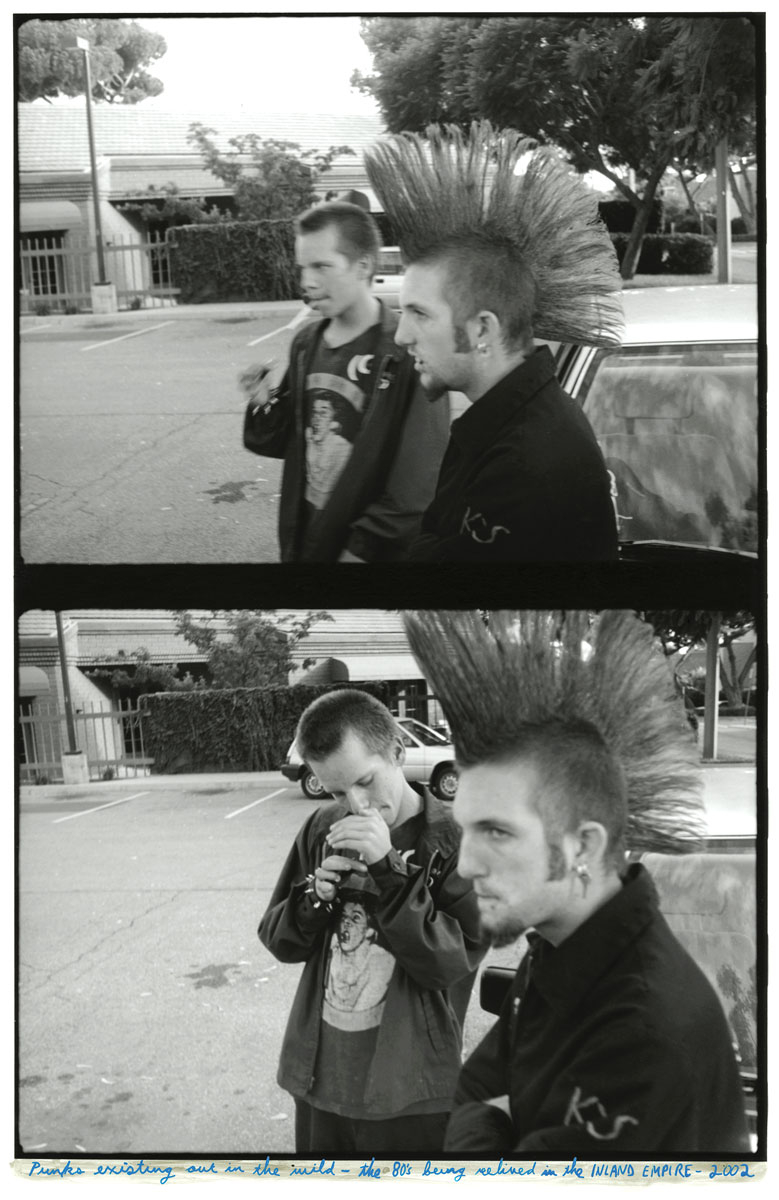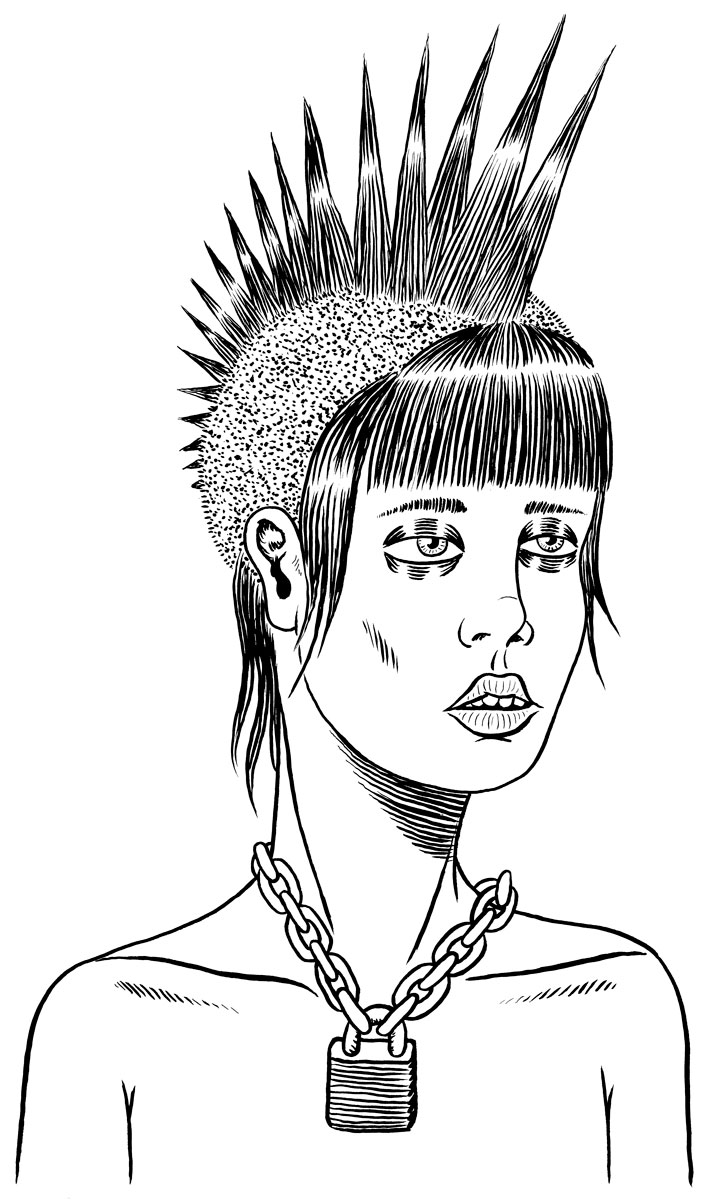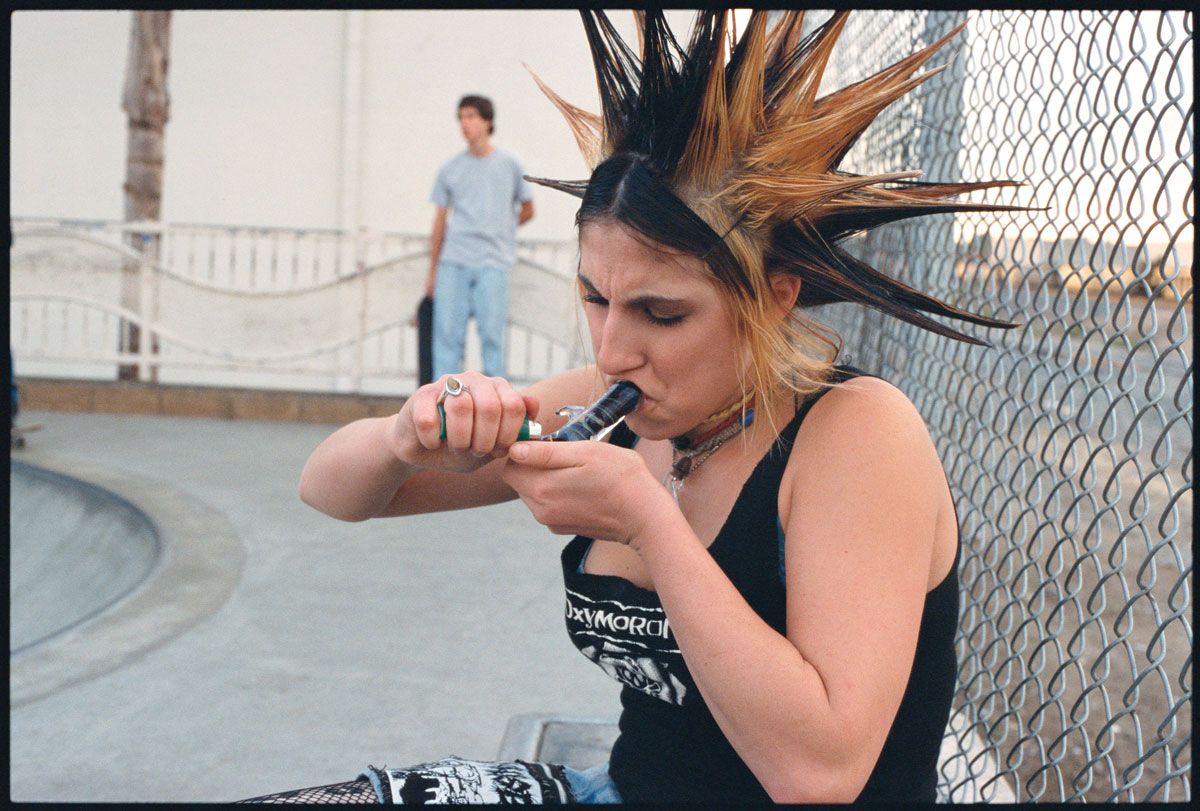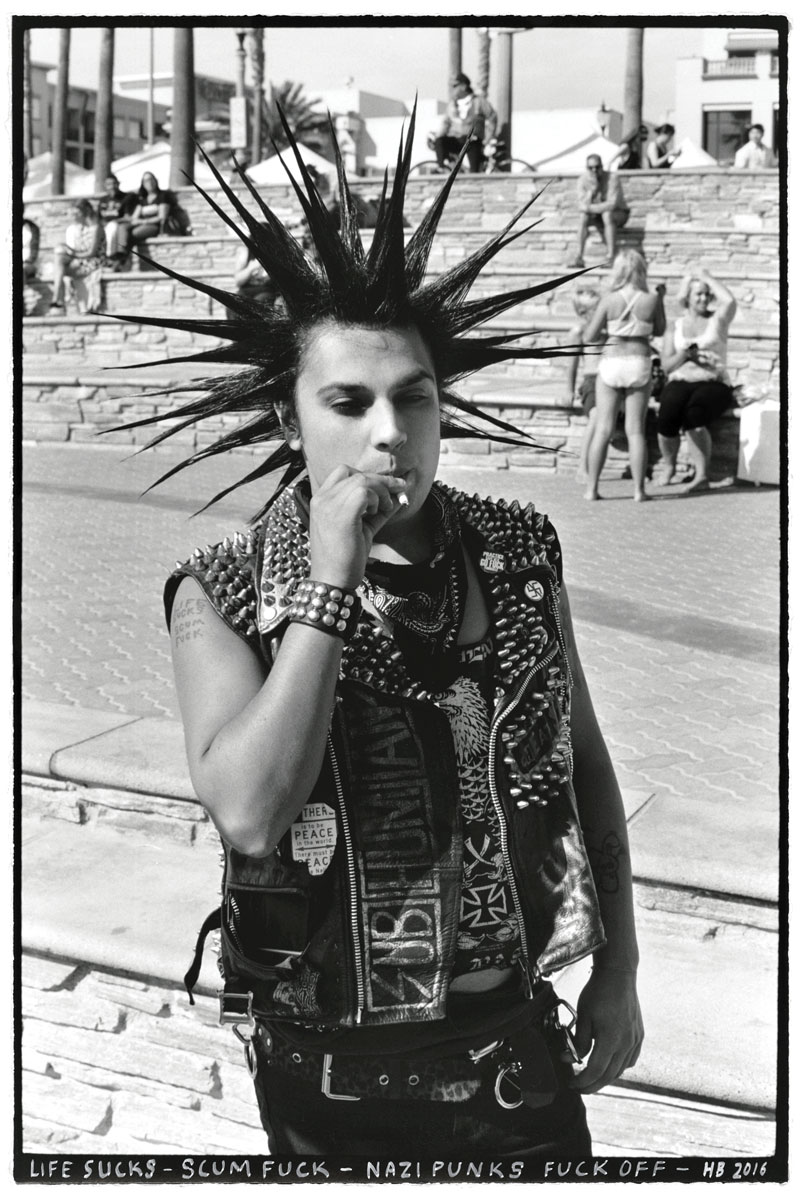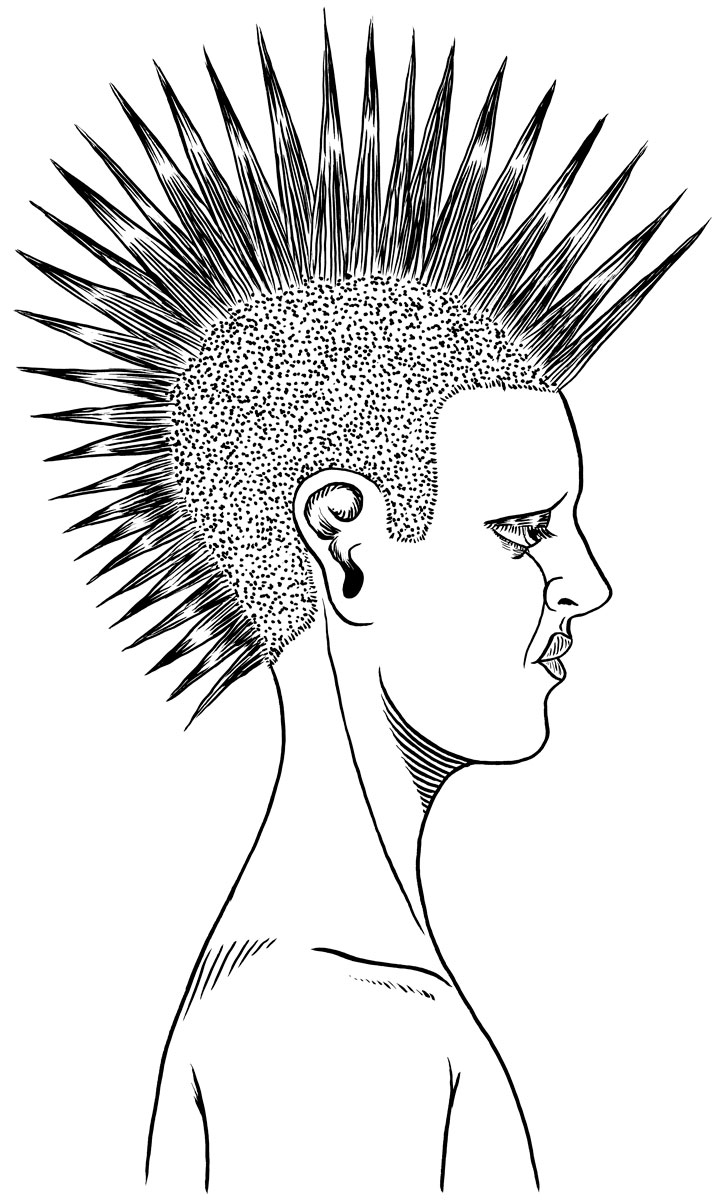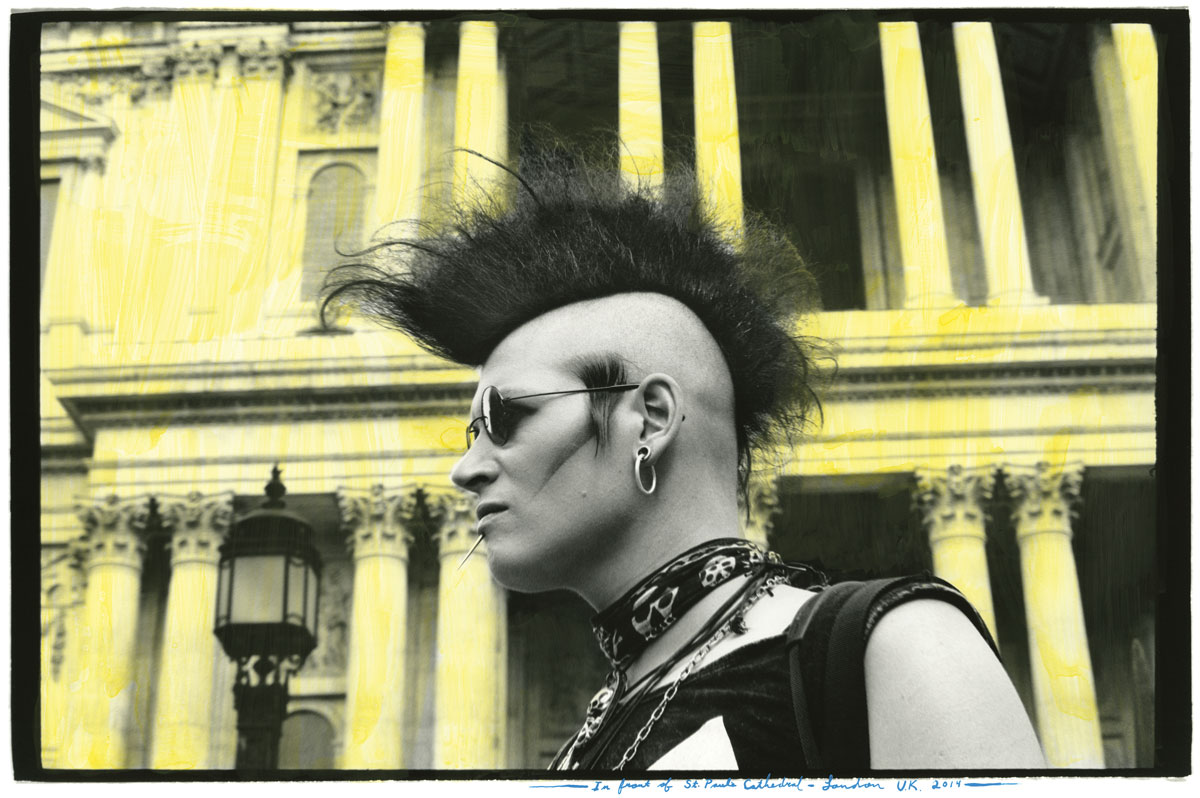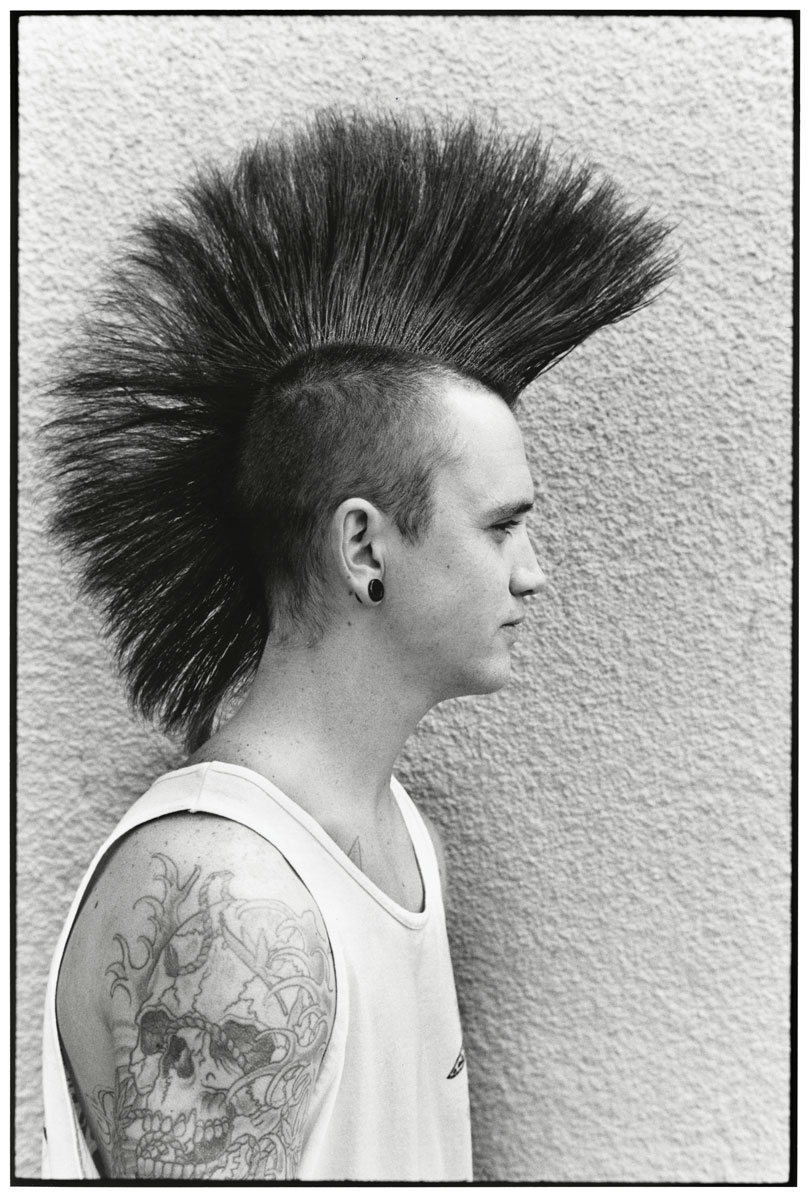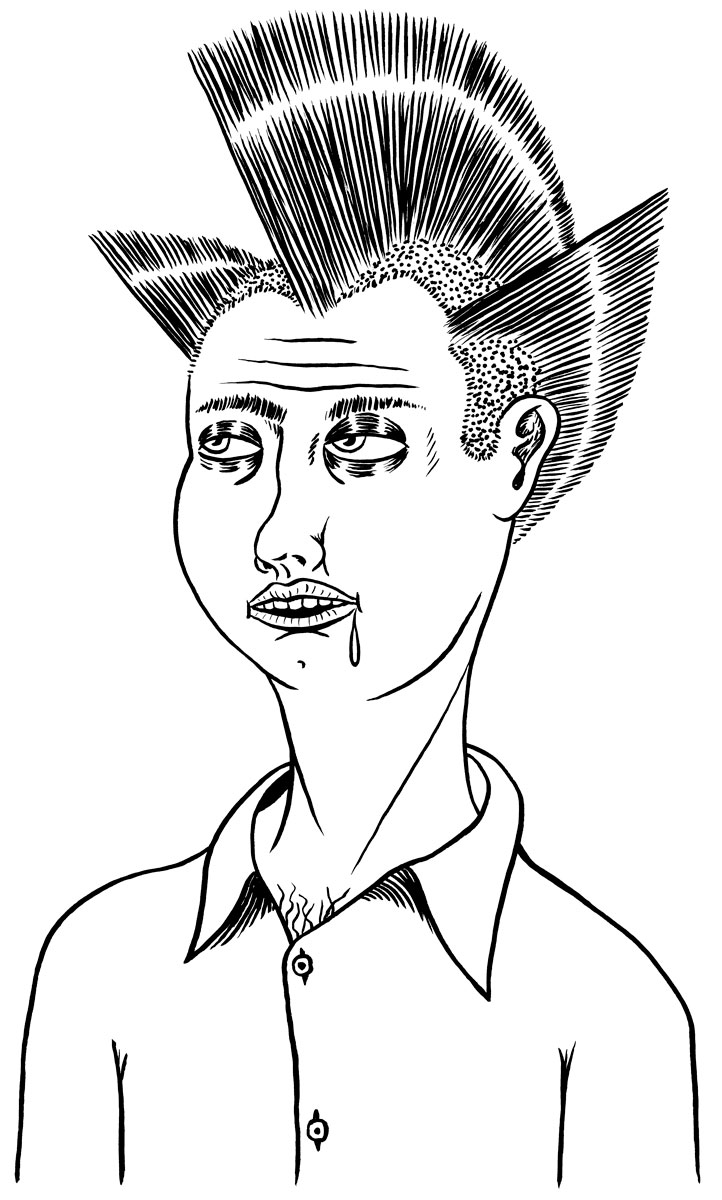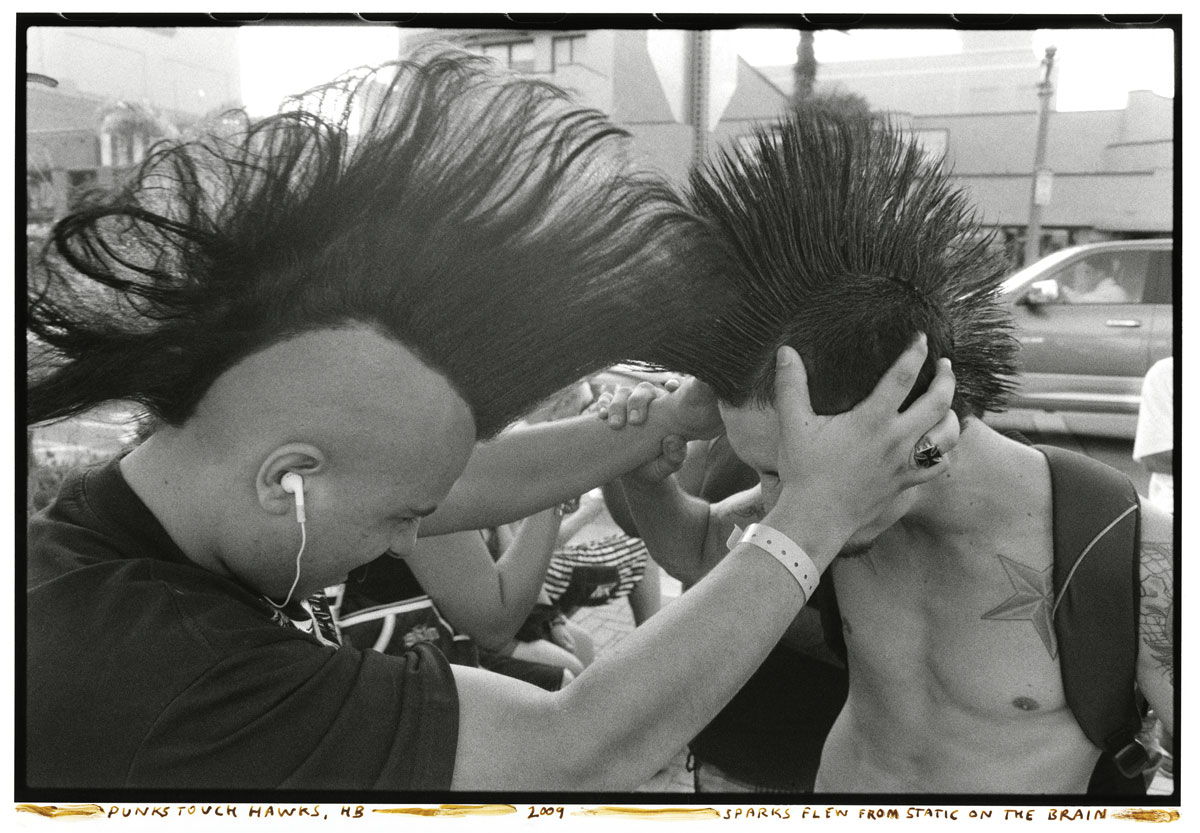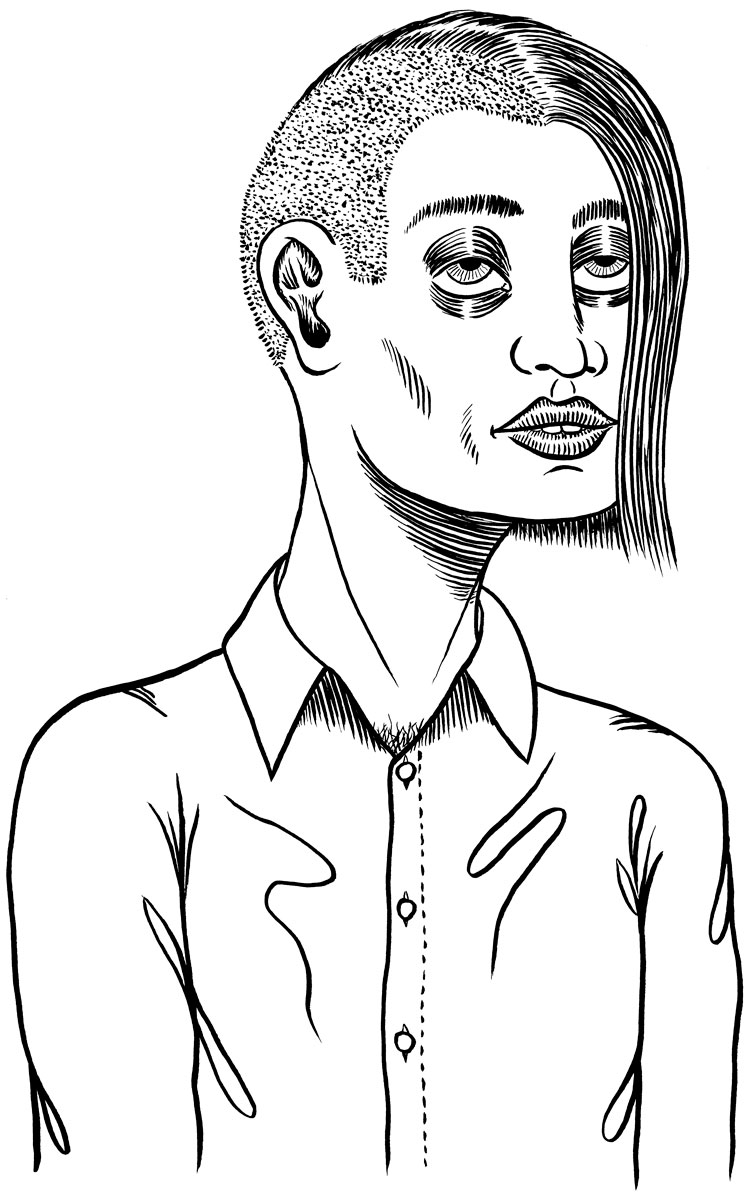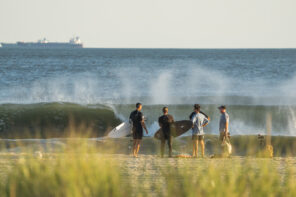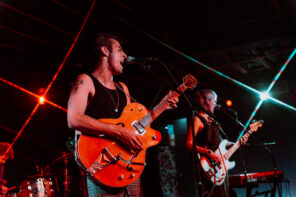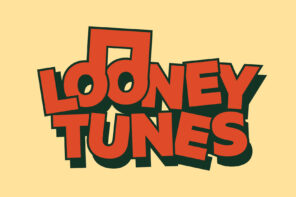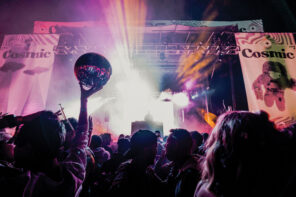The difference between sneering ’70s spikes and those on the heads of people who have adopted the punk posture since—going on 40 years now—is not all that great.
There are many more hair products available to achieve new heights now, maybe.
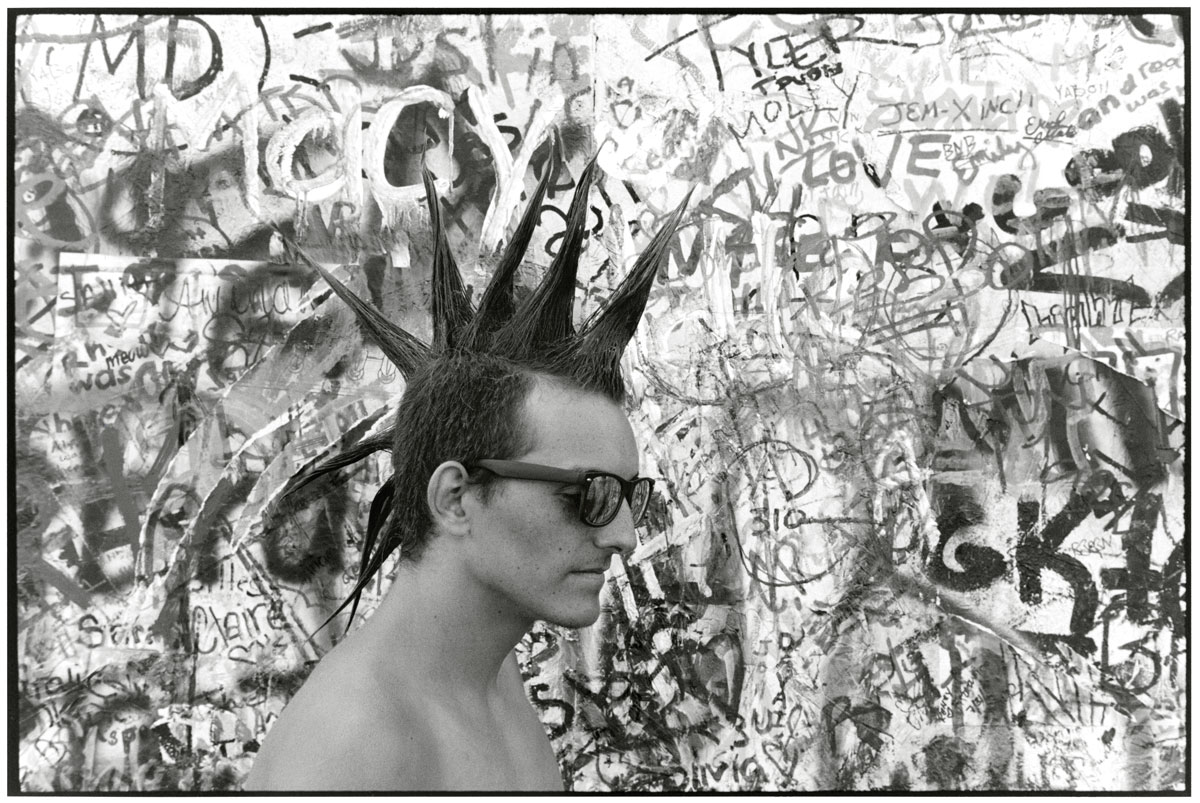
“For me, projects like this marinate over time, so although I was shooting portraits of people with mohawks when I saw them,” Templeton says, “I don’t think it was conceived as a project until many years later. Then it just sits on the back burner over the decades as I shot when circumstances presented themselves.”
A mohawk is the bumper sticker of the human body.
Templeton made the leap from half-pipes to art galleries even before he began photographing the portraits in “Hairdos of Defiance,” at first creating art for the skate decks for his company Toy Machine and carrying a camera on the road. His drawing, painting and photography output has sprawled from skateboards to films to zines to galleries, with the exhibition for “Hairdos of Defiance” landing in the Roberts Projects in Los Angeles and a book of the same name put out by Deadbeat Club Press.
Ed keeps things pretty simple himself, not revealing anything much through his hairstyle or clothing. So, he politely declined our offer to Dep up his ’do, but he did entertain our questions about his 20-year-long photography project.
In some cases there was no assumption at all because the hairdo was an act of non-conformity that I had never seen.
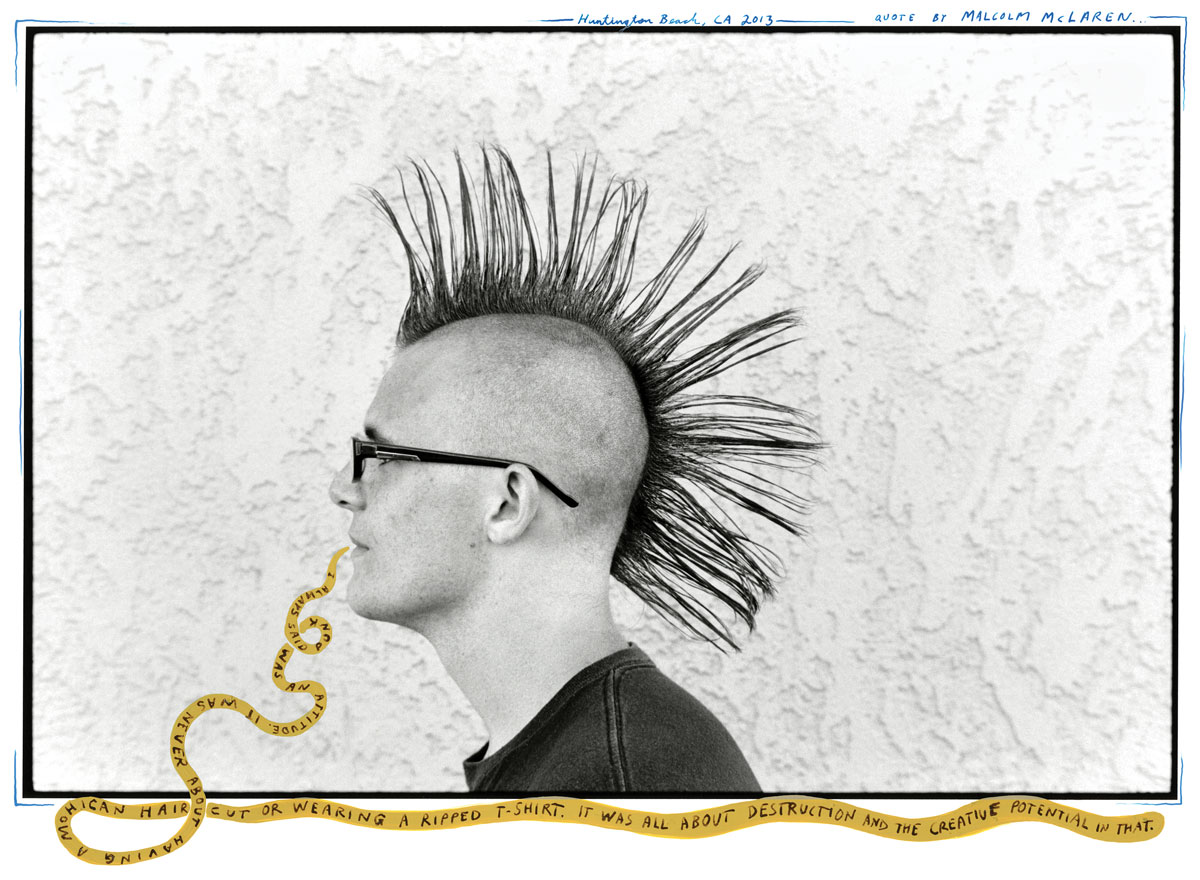
What connects the people in the photos (beyond similar extreme hairstyles)?
Ed: I asked these people for a portrait because of their hairdos. But under that surface, there is a direct link between them all, in that each one is a person who uses their hair and fashion to signal something to others about themselves. It’s a particular kind of person willing to do that. It shows a dedication to something that will draw attention to yourself for better or worse, and in most cases telegraphs where they are coming from. A mohawk is the bumper sticker of the human body, along with tattoos.
What assumptions about the people in the photos might be wrong?
Ed: In my childhood, a mohawk was a sign saying “don’t fuck with me or I’ll beat your ass,” but that is not the case in the current world we live in. That assumption was still inside me when I approached people, but I found that, in fact, 99-percent of them were delightful and eager to be photographed. I realized that the mohawk has lost its meaning for the most part, and that a smaller percentage of people wear them for the traditional punk reasons, and that more wear them as a fashion statement, to attract attention, or just for fun. Of course, there are other “Hairdos of Defiance” in the book, too, and in some cases there was no assumption at all because the hairdo was an act of non-conformity that I had never seen and I could not begin to guess what music or subculture it was connected to.
